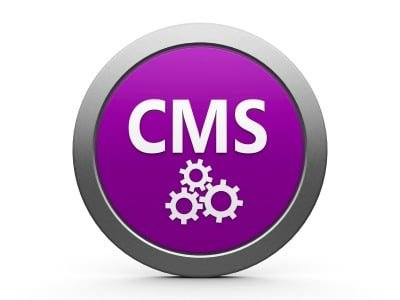What is CMS and what can it do for me?
CMS stands for “Content Management System”. It’s a platform that allows a web designer and other specific users to create, edit, modify and publish content as well as maintain the website from a central interface.
How does a CMS work?
In comparison to a static, hard-coded website, a CMS website is dynamic and the content is well organized into a database that allows the information to be centralized and updated “live” to see the results online right away.
If your website has been designed a long time ago and coded from scratch without a CMS, chances are that the slight little change, such as a spelling mistake, needs to be performed by your web designer.
Let’s not even venture into modifying the layout of your website, you’ll be waiting for weeks or months before it’s done…
What if you could collaborate, participate, update your content from anywhere and take ownership of your website’s destiny?
Wouldn’t it be amazing?
We live in an era where we have access to an enormous amount of information anywhere, anytime.
Why not being able to adjust your company’s image and message quickly by having access to your website’s content easily?
Here are some of the benefits of a CMS
EASE OF ACCESS
Your website’s content and tools don’t live on your web designer’s computer. With a computer and an internet access, you can easily update your own content from anywhere on earth. For certain platforms such as WordPress, you can even update it from your smartphone or tablet!
The same way you like to post an update on Facebook when you feel inspired, you should be able to write a quick post on your website’s blog easily.
FRESHNESS OF CONTENT
You’ve probably read it on numerous posts, “fresh content” is key to providing value to your visitors. It also helps with SEO (Search Engine Optimization see “What is SEO and why do I need it?” to learn more about SEO).
As it becomes easier for you to update your website’s content, you’re more likely to be in the “writing mood”! All major search engines like Google, Yahoo and Bing take new content as an important factor for search engine rankings as it is a sign that you’re invested into your online marketing, you show your visitors you’re “on the ball” and ready to provide them with great services or products.
SECURITY
The security of your website is paramount nowadays in a world of rising identity and information theft (see “10 tips to make your website security a priority” to learn more).
With a CMS, you and your web designer can assign roles and privileges to users and specify the areas of your website that are accessible and the restricted ones.
You can even define how your blog subscribers can interact with your website.
COLLABORATION
What a time-consuming task it is to write an update for a page of your website, share it with a few other collaborators within your company for their feedback or input then have to send it to your IT department for upload onto the server…
A CMS gives you the opportunity to collaborate “live” by drafting pages or blog posts and give your team members a chance to participate before you click “publish” yourself. Also, content within your website can be searched and repurposed to create new material within minutes.
FLEXIBILITY
Adding new features to your website has never been easier. Most major CMS platforms on the market such as WordPress, Joomla and Drupal offer a plethora of plugins or little pieces of programs that enhance the functionality of your website. WordPress alone has more than 25,000 plugins available!
A CMS makes it easy and cost-efficient to add new features to your website such as image sliders, rotating testimonials, FAQ accordions, custom forms and more!
Something to keep in mind…
A CMS can provide you with a lot of flexibility and freedom to update your own website, however, you need to be aware of certain technical aspects that would be better managed by your web designer.
Like any new concept to learn, it takes some practice to truly use it to the full and avoid any mistakes that could compromise your website’s integrity.
I would suggest to collaborate with a professional web designer to define what roles and privileges would serve you best according to your needs and your technical savviness.
Remember that your web designer’s role is to support you and a mix and match of self updates and web designer’s updates can go a long way in ensuring your website looks beautiful, functions well and is a pleasure to use for your visitors.





